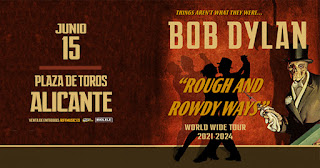I was just bringing in some washing. Five or six pegs crumbled in my hands. The plastic just gives up the ghost when faced with day after day of bright sunlight and heat. That's why Spaniards park their cars in the shade. If not expect the paint to peel off the bodywork and the headlight lenses to go cloudy in time. Oh, and expect singed skin and lots of oohing! and aahing! getting into the car.
Garden furniture doesn't have a chance. The chairs that have the nylon seats and metal frames have proved to outlast the nice rattan designs, the good looking wooden furniture and even the very basic, very cheap, plastic, stacking chairs. Even then, eventually, the thread fails. You realise it's happening when you hear a faint ripping sound and your bottom begins to sink earthward though, usually, fortunately, there is time to save your drink.
When you start to realise that the Spanish climate makes short work of almost anything left outside you start to look for answers. Surely it can't do anything to a glass and steel table? But the steel will rust as the constant expansion and contraction produces little fissures in the paintwork which let in the moisture and the glass will discolour. Often the repeated expansion and contraction means that the legs end up different lengths too so that the tables start dancing or limping as Spaniards say. Years ago my partner, for whom looking at garden furniture is a bit of a hobby, realised why lots of Spanish gardens have furniture that looks like marble but it actually concrete. It holds up well. We bought a table with benches maybe ten years ago. It still looks fine but close inspection reveals the stresses and strains even there. And it's not that soft, being concrete.
A couple of long weeks ago we had a "reventón seco"? The reventón is a short lived very fast, very hot wind. The explanation is something to do with rain evaporating before it reaches the ground. The mass of air that held the rain continues downwards, hits the ground and flows out leaving a void into which ground level hot air rushes. One of our trees, one of those that doesn't do the bend like a reed thing of the Chinese proverb but prefers the Battle of Little Round Top dictum - Stand Firm Ye Boys from Maine - was swaying quite a lot despite the girth of its trunk. I moved the car in case it fell. I couldn't move the house. The chairs skipped and hopped like the Wright Flyer at Kitty Hawk.
When the thunder and lightning comes so, sometimes, does the torrential rain. It gouges great trenches in our roadway. In towns and cities it tears down the street carrying cars and containers before it. Fifteen minutes later it's all over and the neighbours start brushing out the mud and quarreling with their insurance company. Sometimes it comes with hailstones, often it comes with hailstones, big hailstones that dent cars, break windscreens and destroy the crops in the field.
Extreme weather is commonplace in Spain. Too hot, too windy, too stormy, too hailstoney, two rainy and, in our living room in winter, even too cold.





















